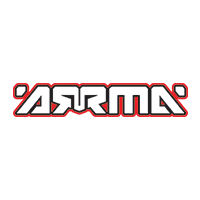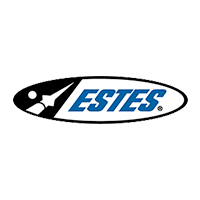
Tamiya 1/32 F-15J Eagle 60307
$169.99
Description
Description
..About the McDonnell Douglas F-15J Eagle JASDF
Shooting down more than thirty Mig 29 and Mig 25 Iraqi fighters in the Gulf War, the devastatingly powerful McDonnell Douglas F-15 Eagle once again proved itself the strongest fighter in the sky. A total of 900 of these aircraft have been produced and employed by various airforces around the world. With over 200 F-15s, the Japan Air Self Defense Force owns the second largest fleet of these planes in the world
The development of the F-15 started towards the end of the 1960s. The U.S. Air Force was focused on the deployment of aircraft capable of carrying nuclear weapons and ground attack such as the F-111, F-105 Thunder chief and F4 Phantom. Large aircraft like the 101B Voodoo and F-106 Delta Dart were also deployed in efforts to intercept the enemys strategic bombers. At that time, air superiority was not the domain of small, maneuverable aircraft. This all changed with the outbreak of the Vietnam War, where the U.S. Air Force sustained heavy damage from the nimble Mig 17s and Mig 19s of the North Vietnamese. At the 1967 Moscow Air Force Show, the Mig 23, Mig 25, and the Sukhoi 15 were introduced, further encouraging the U.S. to develop a fighter plane capable of combating the ever growing Soviet Air Force. It was then that the U.S. Air Force appealed to eight aircraft manufactures to draw up proposals for a new fighter that could guarantee air superiority. In December 1969, McDonnell Douglas proposal was adopted, and work started on the F-15, the first air superiority fighter since the F-86 Sabre, active during the Korean War. The role of the F-15 was to use its quick acceleration, climbing power, high maneuverability and attack power to overpower the enemys aircraft and ensure air superiority. The F-15 is powered by two Pratt & Whitney F100-PW-100 turbofan engines with afterburners, each with 7348kg thrust. It was primarily designed for optimal maneuverability at about Mach 0.9, the speed at which most aerial combat occurs. The abundant use of lightweight materials such as titanium alloy and a boronepoxy compound allowed for even more speed.
The production licenses for the fuselage and engine of Japans F-15 were contracted by Mitsubishi Heavy Industries and Ishikawajima Harima Industries respectively. The single seat version was designated j-type and the two seater, DJ-type. The internal fuel tank capacity of the F-15J was substantially inreased. The specifications of the J-type are based on the C-type, including the increased internal fuel tank capacity and reinforced landing gear. However, for reasons of secrecy protection, the adoption of the TEWS (Tactical Electronic Warfare System) was rejected in favor of the domestically produced J/APR-4 radar warning receiver. Therefore, while the C-type is equipped with a thick TEWS antenna on the top of the left fin and a thin mass balance on the top of the right fin, the J-type is equipped with thin mass balances on both fins. The J/APR-4 antennas were attached to the front edges of the main wings and rear edges of the fins. Unique to the J-type, the J/ASW-10 data link was also added. Used for air defense, this high speed transmission system connects the F-15 to the ground and E-2C early warning aircraft. Some aircraft were also equipped with the domestically produced J/ALQ-8 electric wave disruption system.
The F-15J was armed with one 20mm Vulcan Cannon M61A1, positioned in the right wing root. Also, medium range AIM-7 Sparrow, short range AIM-9 Sidewinder, and the domestically produced AAM-3 air-to-air missiles were adopted. These weapons were controlled by a nose radome-stored AN/APG-63 radar fire control system, with a detection range of over 200km.
The first two J-type planes were produced by McDonnell Douglas company and flown into Japan in March 1981. In December, the McDonnell Douglas produced parts started to be assembled in Japan as the production licenses were gradually transferred to Japanese industries. As of 1999, 165 J-type aircraft and 48 DJ-type aircraft have been produced.
In December 1981, at Nyutabaru base in Miyazaki prefecture, a provisional squadron was formed for pilot training using five J-type and DJ-type F-15s. In December of 1982 it was formally promoted to a permanent aircraft squadron. Subsequently, more of these aircraft were deployed to the 203rd squadron and 201st squadron of Chitose base and the 204th squadron of Hyakuri base. In 1997, the 306th squadron of the Komatsu base changed their aircraft from F-4Ejs to F-15s. Presently eight F-15 squadrons protect the skies over Japan. In June of 1999, the 305th squadrons six F-15J and DJ aircraft participated in the Japan/U.S. joint military exercises in Guam, the first time ever for fighter planes from J.A.S.D.F. to be dipatched outside Japan.
Undergoing continual improvements to its radar fire control system, electronics, and engine digital control system, electronics, and engine digital control system, the F-15J will surely fly as the main fighter of the J.A.S.D.F. for years to come.
Paints required for this kit-
Note: The color chart below is the paints called out in the assembly manual of the model kit... Choose the bottle volume that best meets your needs. All spray can paints (AS &..TS) are available in 100ml.
- TS-26- 100ml Pure White
- TS-30- 100ml Silver Leaf
- X-1- 10ml Black
- X-10- 10ml Gun Metal
- X-11- 10ml Chrome Silver
- X-12- 10ml Gold Leaf
- X-13- 10ml Metallic Blue
- X-18- 10ml Semi Gloss Black
- X-19- 10ml Smoke
- X-2- 10ml White
- X-7- 10ml Red
- XF-1- 10ml Flat Black
- XF-15- 10ml Flat Flesh
- XF-16- 10ml Flat Aluminum
- XF-19- 10ml Sky Grey
- XF-2- 10ml Flat White
- XF-23- 10ml Light Blue
- XF-24- 10ml Dark Grey
- XF-25- 10ml Light Sea Grey
- XF-26- 10ml Deep Green
- XF-27- 10ml Black Green
- XF-28- 10ml Dark Copper
- XF-49- 10ml Khaki
- XF-51- 10ml Khaki Drab
- XF-56- 10ml Metallic Grey
- XF-57- 10ml Buff
- XF-60- 10ml Dark Yellow
- XF-61- 10ml Dark Green
- XF-62- 10ml Olive Drab
- XF-66- 10ml Light Grey
Specifications
| Brand | Tamiya |






































 Ships in 24 - 48 hours
Ships in 24 - 48 hours![Artesania Modelling Cutter No.1 Modelling Tool [27019]](/assets/thumb/ART-27019.png?20210309120049)

![Deluxe Materials Plastic Kit Glue 20mL [AD70]](/assets/thumb/DM-AD70.jpg?20230421114526)
![Deluxe Materials Plastic Magic [AD77]](/assets/thumb/DM-AD77.jpg?20230421114512)















